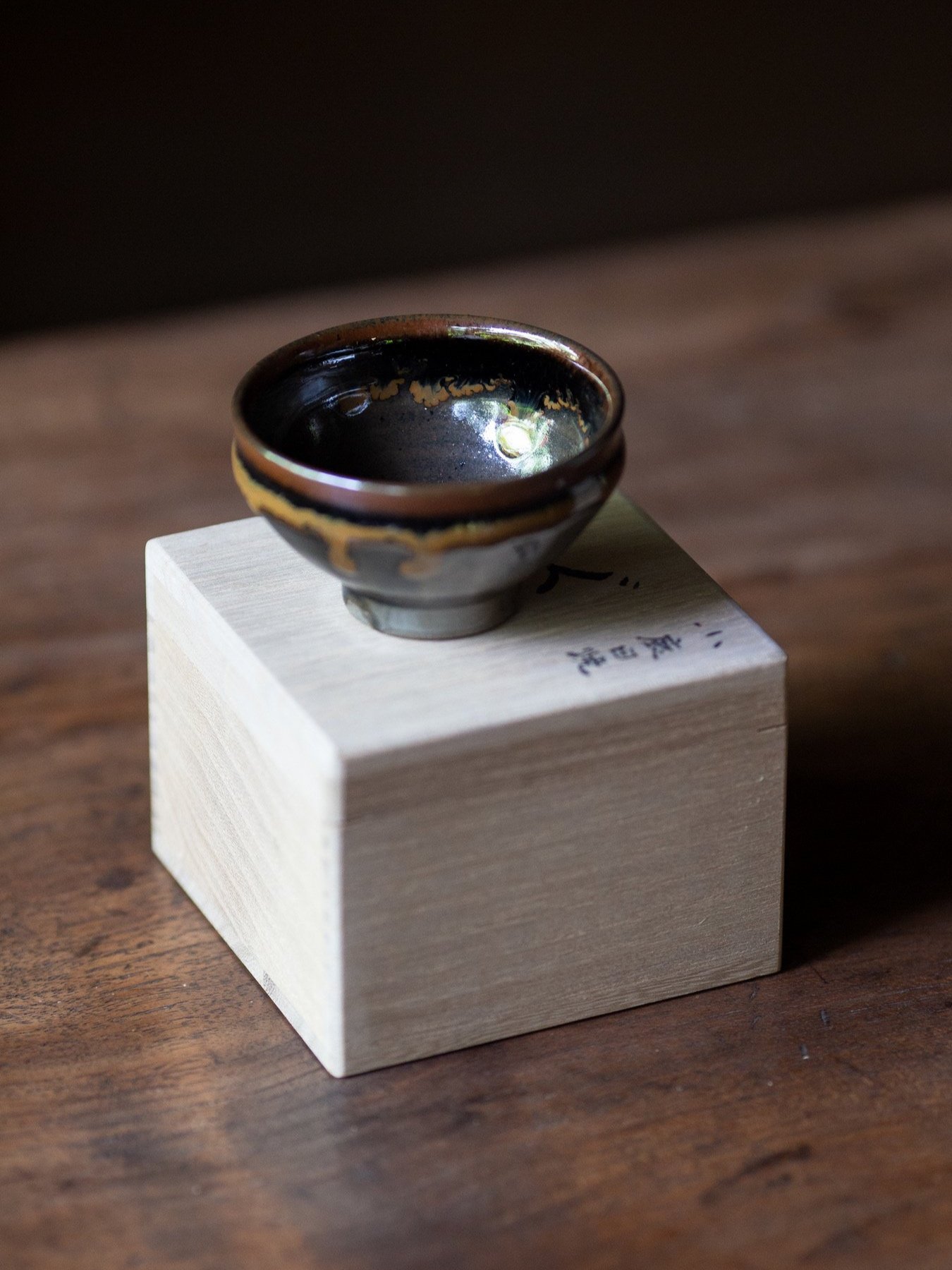 Image 1 of 3
Image 1 of 3

 Image 2 of 3
Image 2 of 3

 Image 3 of 3
Image 3 of 3




Sake Cup [Lotus]
This cup was produced on the Japanese island of Kyushu according to ancient techniques dating back to the 15th century when Korean potters brought new techniques such as kiln designs and ash-glazing.
It is a great example of how unique sake cups can be. The beautiful rounded top appears to rest peacefully in a lotus flower. Like green tea during ceremonies, sake can be served in well-chosen vessels to appreciate its taste in a mindful way and to create a memorable experience which respects the knowledge and labor of those who produced it.
Sake, which is made from fermented rice, took a few hundred years to develop after rice was first cultivated in Japan over 2000 years ago. The earliest form was called kuchikami-zake. The grains of rice would be chewed and spat into a vat. Mixed together with enzymes from the human saliva and natural yeast, it would become alcohol. Today Sake is produced industrially and artisanally across Japan.
This cup was handmade in the village of Onta where a few potters work together as a community creating objects both for daily use and artistic purposes. Onta pottery has been designated an Intangible Cultural Property of Japan meaning that potters continue to work according to traditional methods and perpetuate important old knowledge and savoir-faire.
Delivered in a beautiful wooden box with hand-brushed calligraphy.
This cup was produced on the Japanese island of Kyushu according to ancient techniques dating back to the 15th century when Korean potters brought new techniques such as kiln designs and ash-glazing.
It is a great example of how unique sake cups can be. The beautiful rounded top appears to rest peacefully in a lotus flower. Like green tea during ceremonies, sake can be served in well-chosen vessels to appreciate its taste in a mindful way and to create a memorable experience which respects the knowledge and labor of those who produced it.
Sake, which is made from fermented rice, took a few hundred years to develop after rice was first cultivated in Japan over 2000 years ago. The earliest form was called kuchikami-zake. The grains of rice would be chewed and spat into a vat. Mixed together with enzymes from the human saliva and natural yeast, it would become alcohol. Today Sake is produced industrially and artisanally across Japan.
This cup was handmade in the village of Onta where a few potters work together as a community creating objects both for daily use and artistic purposes. Onta pottery has been designated an Intangible Cultural Property of Japan meaning that potters continue to work according to traditional methods and perpetuate important old knowledge and savoir-faire.
Delivered in a beautiful wooden box with hand-brushed calligraphy.
This cup was produced on the Japanese island of Kyushu according to ancient techniques dating back to the 15th century when Korean potters brought new techniques such as kiln designs and ash-glazing.
It is a great example of how unique sake cups can be. The beautiful rounded top appears to rest peacefully in a lotus flower. Like green tea during ceremonies, sake can be served in well-chosen vessels to appreciate its taste in a mindful way and to create a memorable experience which respects the knowledge and labor of those who produced it.
Sake, which is made from fermented rice, took a few hundred years to develop after rice was first cultivated in Japan over 2000 years ago. The earliest form was called kuchikami-zake. The grains of rice would be chewed and spat into a vat. Mixed together with enzymes from the human saliva and natural yeast, it would become alcohol. Today Sake is produced industrially and artisanally across Japan.
This cup was handmade in the village of Onta where a few potters work together as a community creating objects both for daily use and artistic purposes. Onta pottery has been designated an Intangible Cultural Property of Japan meaning that potters continue to work according to traditional methods and perpetuate important old knowledge and savoir-faire.
Delivered in a beautiful wooden box with hand-brushed calligraphy.
Origin: Japan
Material: Natural Clay
Condition: New
Dimension: H 7,5 x D 5 cm - Box H 7,5 x W 10 x L 10 cm
Care: Rinse gently with water. Avoid aggressive soap to preserve the quality of the ceramic.
